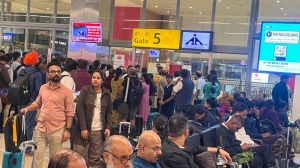India sits on the fence in open source debate
The country’s official policy on software remains vendor, platform and technology neutral, tough reports claim developing countries nee...

The country’s official policy on software remains vendor, platform and technology neutral, tough reports claim developing countries need open source and free software more than the developed world.
‘‘We are not mandating anything, not making anything compulsory. We are for the market place to decide which is better,’’ says a Department of IT official on the Central government’s decision not to take sides in the open source versus proprietary software debate.
One reason for tech-neutrality is the total cost of ownership (TCO) linked with software. TCO typically includes running, operation and maintenance costs that can significantly push up the overall cost of software.
‘‘The total cost of ownership of software needs to be factored in. Not just initial investment, but overall operational cost over the life of a product,’’ says the official.
Besides, even though open and free software such as GNU/Linux, which allow users to modify and re-distribute copies, are associated with lower total cost of ownership, they are yet to reach a ‘‘critical mass’’ audience.
‘‘More than 90 per cent of software used is proprietary. Though the movement is growing strongly in India and there is a definite opportunity, we are for vendor and platform neutrality,’’ the official said. But in a November, 2003 study of licence fees for proprietary software and GDP per capita for 176 countries, online journal First Monday said, ‘‘…the total cost of ownership (TCO) advantage lies with open source, and the share of licence fees in TCO is much higher than in high labour cost countries.’’
The study by Rishab Aiyer Ghosh, programme leader in the University of Maastricht, based on piracy figures from the Business Software Alliance (BSA) and the World Bank Development Indicators database, 2001, states that software piracy was at 92 per cent in China, followed by 70 per cent in India and 83 per cent in Pakistan.
In the same regions, proprietary software prices relative to GDP/capita are also high — 7.37, 14.53 and 16.20 GDP months in China, India and Pakistan respectively.
As per the study, the poorer a country, the more it ends up paying for proprietary software purchased. In richer countries with higher labour costs, costs cut by purchasing free software don’t necessarily reduce overall operational costs. On the other hand, when labour costs are low, as in developing countries, ‘‘the share of the license fee in the total cost of ownership is much more significant, even prohibitively so.’’
- 01
- 02
- 03
- 04
- 05































